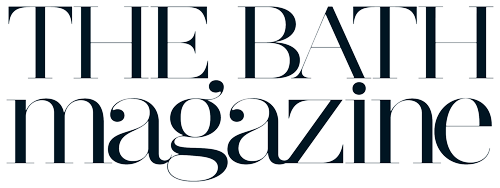Iconic: Portraiture from Francis Bacon to Andy Warhol brings rarely seen works together to explore the ways artists are inspired by photography. Director at the Holburne Chris Stephens shares his thoughts on the exhibition.
The story of modernism in painting is the story of artists’ attempts to rethink their art following the invention of photography. Once the camera had taken on the role of representation, what was painting for?
In the early 20th century, artists sought to depict those things that the camera could not; Pablo Picasso and Georges Braque invented Cubism; the Italian Futurists and, in Britain, the Vorticists developed new languages to describe in paint the experience of the speed and energy of a modern world of industry and motorised transport. Later, artists from Piet Mondrian to Mark Rothko used abstraction to express ideas and sensations beyond the physical or visible world. After the Second World War, many artists took on photography and its offspring, film and television, by appropriating its products. Recognising the ubiquity of the new media, artists looked to photographs and film stills for source material for their art. At the same time, they reflected upon the symbolic and emotional aspects of photography and its dissemination through the media that were then expanding exponentially.
This phenomenon came to be associated especially with the artists gathered under the label ‘Pop Art’. In Britain, it was associated with a group of artists, too young to have served in the war, who benefitted from the more open access to further education in the post-war period. Undoubtedly, the fact that they came unencumbered by traditional values freed them to radically rethink what art could look like and the subjects that it might address. In place of landscape, still-life, portraiture and – most high-brow of all – abstraction, this new generation made art based on adverts, the cinema, the new colour magazines, corporate logos, and new technologies, most of them fundamentally changed by the massive influx of American influence that came with and followed the GIs of the war years and after.
For some, the use of appropriated imagery introduced a kind of pathos that derived from a photo’s sense of time and movement frozen
The Holburne’s new exhibition Iconic focuses on one aspect of this new art – portraiture – a subject especially fascinating for the way the appropriation of photography helped refresh a form of painting that the camera seemed to have made redundant. Artists used photographs as the basis for portraits not as a way out of long sessions in front of their sitters but to inject different qualities to their paintings. For some, the use of appropriated imagery introduced a kind of pathos that derived from a photo’s sense of time and movement frozen. Others, of course, made images of people based on photographs as a way of reflecting more broadly on those images and the individuals captured in them. This new art was often not just about portraiture or the mediation of imagery but about the cult of celebrity and the formation of identities and historical narratives that resulted from such imagery and its ubiquity. Hence the title, Iconic.
While this phenomenon was most associated with Pop artists like Peter Blake, Pauline Boty and Joe Tilson, it actually went back much earlier. The critic Lawrence Alloway reckoned Pop Art started in London in 1949, when Francis Bacon first exhibited his characteristic paintings based on an amalgam of photographic sources from Eadweard Muybridge’s sequences of animals in motion to stills from Serge Eisenstein’s movie Battleship Potemkin. In fact, artists had been using photography for even longer: in the 1930s the paintings of Walter Sickert (who ended his days in Bathampton) were based on photographs and were influenced by his old friend Edgar Degas’s debt to photography. Both Sickert and Bacon found a certain poignancy derived from the sense of a photograph being a fleeting moment captured. Photographs provided them not just with an image but also an emotional intensity, even perhaps a sense of mortality.
In contrast, many of the works in Iconic seem more celebratory, focusing on the famous images that helped turn certain individuals into celebrities. We see portraits of the people who became emblematic of those times: Marilyn Monroe, Brigitte Bardot, Yuri Gagarin, Che Guevara, David Hockney. Some artists, famously Peter Blake, presented themselves as fans, celebrating in paint the film stars and musicians they admired. Others suggested an ideological position in their focus on certain political figures. Richard Hamilton most obviously addressed the power of such imagery, his appropriation of a contact sheet from a Marilyn Monroe photoshoot speaking to the role of such imagery in the actress’s tragic end. Most famously, Andy Warhol’s screen-printing of enlarged photographs was a deceptively simple reflection on the creation of icons through the repetition of images.

© Peter Blake. All rights reserved, DACS 2024. Photo Tate
If this new movement benefitted from the opening up of art schools to a wider social demographic, the art world continued to be dominated by men. Iconic does, however, include the two women who infiltrated the masculine ranks of British pop art. Jann Haworth depicts such stars of Hollywood’s golden age as Mae West and Shirley Temple while using traditional female practices like sewing and needlework. Pauline Boty, whose career only lasted a few years before her early death aged 28, turned pop art on its head by celebrating male sex symbols. Long neglected, her rare work is now widely celebrated and highly sought after.
Appropriately, Iconic includes some really famous works and images. At the same time, it is full of surprises and extraordinary paintings and drawings of great skill and beauty. In a world dominated by digital media and the bombardment of images 24/7, the exhibition poses questions about the role of photography in establishing fame and defining identities while bringing to Bath great works of art that speak of another time, 50, 60, even 70 years ago.
Iconic: Portraiture from Francis Bacon to Andy Warhol, until 5 May, The Holburne Museum; holburne.org


